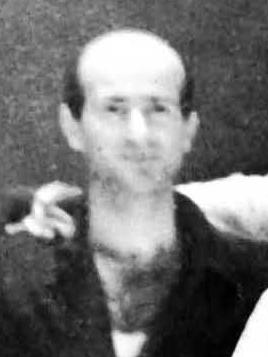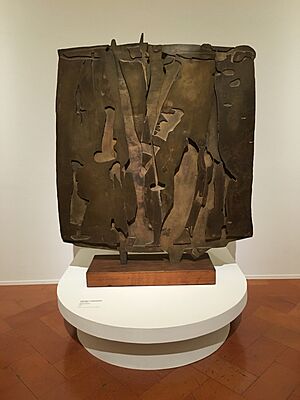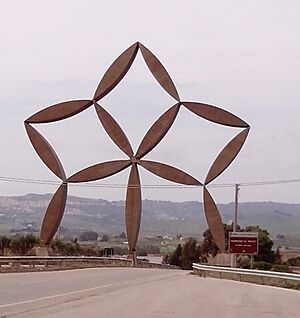Pietro Consagra facts for kids
Quick facts for kids
Pietro Consagra
|
|
|---|---|

Consagra in 1947
|
|
| Born | 6 October 1920 Mazara del Vallo, Province of Trapani, Sicily
|
| Died | 16 July 2005 |
| Nationality | Italian |
| Known for | sculpture |
| Movement |
|


Pietro Consagra (born October 6, 1920 – died July 16, 2005) was a famous Italian sculptor. He helped start a group of artists called Forma 1 in 1947. This group believed in both Marxism (a political and economic idea) and a type of art called structured abstraction. This means they made art that used shapes and forms, not realistic pictures.
The Life of Pietro Consagra
Pietro Consagra was born in a town called Mazara del Vallo in Sicily, Italy. This was on October 6, 1920. His parents were Luigi Consagra and Maria Lentini.
When he was 11, he went to a special school for sailors. He first learned to be a mechanic, then a ship captain. In 1938, he moved to Palermo and started art school. Even though he got sick, he finished school in 1941. That same year, he began studying sculpture at the Accademia di Belle Arti di Palermo.
After World War II events in Sicily, Consagra worked for the American Red Cross. He drew funny pictures for them. He also joined the Italian Communist Party, a political group. In 1944, he moved to Rome. There, he met other artists and learned more about art and ideas. He studied sculpture at the Accademia di Belle Arti di Roma but left before finishing.
Pietro Consagra's Artworks
In 1947, Pietro Consagra and other artists started the group Forma 1. They believed in making art that was abstract, using shapes and lines instead of real-life images. They also had strong social ideas.
Consagra's art became very popular. He mostly worked with metal, but also used marble and wood. His sculptures were often thin and had rough textures. Famous art collectors, like Peggy Guggenheim, bought his works.
He showed his art at the Venice Biennale, a big art exhibition, many times. In 1960, he even won a prize for his sculpture there.
In the 1960s, he joined another art group called Continuità. He also taught art in Minneapolis, USA, in 1967. He started getting big projects, which let him create very large sculptures. Some of his works are in important places like the Foreign Ministry in Rome and the European Parliament in Strasbourg. You can also find his art in famous museums around the world.
Consagra went back to Sicily in the 1980s. He made many important sculptures there. He helped create an open-air museum in a new town called Gibellina. The old town was destroyed by an earthquake in 1968. Consagra designed the gates for the town's entrance. He also designed a building called "Meeting" and the gates to the cemetery. He was later buried in that cemetery.
Writings by Consagra
Pietro Consagra also wrote books about art. In 1952, he published La necessità della scultura. This book was his answer to another artist's ideas about sculpture. He also wrote L'agguato c'è in 1960 and La città frontale in 1969. In 1980, he wrote his life story, called Vita Mia.


